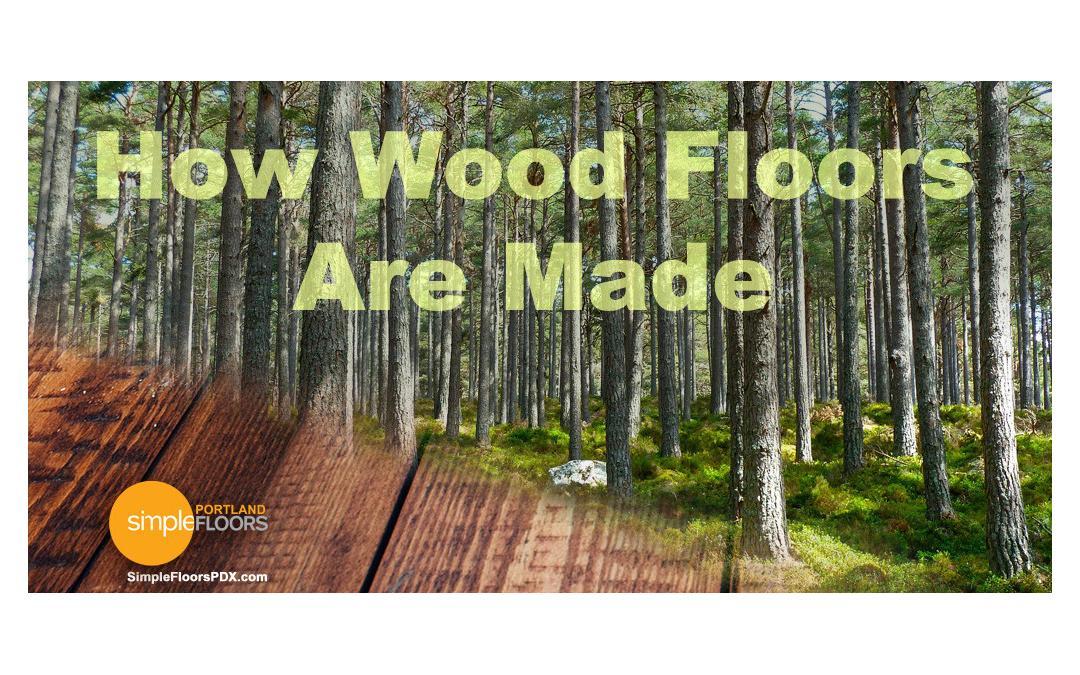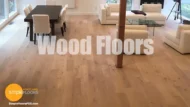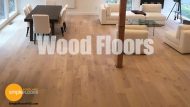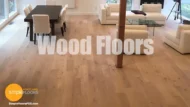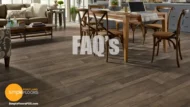Several times on our Facebook page recently, our community has asked how hardwood floors are made. It was surprising to us that so many are interested in how wood flooring is manufactured. We can tell you that the highly complex and detailed process that goes into manufacturing hardwood flooring is quite precise and requires a lot of specific steps to ensure the highest quality and uniformity.
We are going to review how solid hardwood floor is made and also the far more intricate process of how Bamboo flooring is made. Though the end result of each of these types of wood flooring is similar and are used for flooring, some of the processes required to create Bamboo flooring is very different than hardwood flooring. Let’s take a look at both separately.
How Hardwood Floors Are Made:
How is hardwood flooring made, you ask? There are multiple steps in the process of making hardwood floors, all of which must be completed with precision.
Step 1: Drying the rough wood
The rough sawn wood arrives at the factory with excessive moisture that must be removed from the wood before it is ready to be turned into hardwood flooring components. This is done by putting huge stacks of rough lumber into an enormous dryer or kiln. The dryer is heated and extracts excess moisture from the wood over a period of 10-30 days, ensuring the moisture content of the wood is lowered to around 7%.
Step 2: Standardize wood sizes
After the wood is dried is it then feed to conveyors that take the varying sized wood planks through a machine that cuts the rough planks into standard-sized pieces. Standardizing the planks to sizes that are used for wood flooring is crucial to being able to efficiently manufacture wood flooring in volume.
Step 3: Removing defects
Once the rough lumber is sized, the planks are manually trimmed to remove defects. Things such as cracks and large knots are removed from planks to ensure the resulting wood flooring will be strong and long-lasting. Removing these problem portions from planks also prevents the planks from breaking during the rest of the wood floor manufacturing process, so they do not jam up the machinery.
Step 4: Molding the floor planks
Using a sophisticated molder machine, each plank is given a tongue and groove edge. One side of the floor plank is shaped with a tongued edge and the other with a matching groove indentation. This allows the completed flooring to fit together with precision when being installed and ensures that the entire floor is level and secure.
Additional grooves are carved into the underside of each wood floor plank to aid in air circulation and stability of the completed wood flooring. This crucial step helps to keep the floor from warping or twisting with the humidity and moisture changes that occur at various times of the year.
Step 5: Quality checks
Throughout the entire process of making hardwood flooring, staff continually makes visual quality checks to ensure that no abnormal flooring moves to the next step of the process.
Step 6: Sorting by grade and color
The wood planks are trimmed of any additional imperfections, then sorted and grouped by grade and color variations.
Step 7: End tongue and grooves
Next, the planks are given tongue and groove treatments to the ends of each piece. These tongue and groove modifications allow each wood floor plank to be properly joined to the end of another piece of flooring when being installed.
Step 8: Final check and sorting
Each piece of flooring is visually checked again for quality and grade before grouped for finishing.
Step 9: Prefinishing the wood flooring
Once final grading and grouping have been completed, the wood floor planks are sent through a production sander with multiple sanding heads that each has a finer grit sanding belt. The wood flooring exits the sander completely smooth and prepared for final finishing.
Each group of wood floor planks then pass through a staining machine, which applies the desired color stain to the floorboards. The stain is dried on the conveyor and then receives up to 10 coats of protective clear varnish.
Step 10: Packaging
The stained and varnished hardwood flooring is packaged in sections as they exit the production line. This process ensures that the previously grouped floor sections remain together through finishing and packaging.
The making of hardwood floor is complete and ready to be shipped and installed in your home.
How Bamboo Hardwood Floors Are Made:
Making bamboo flooring is a completely different process than how hardwood flooring is made. Frankly, how bamboo floors are made will be quite a shock to you if you have never seen it before. The methods used to make bamboo floor is extremely unique, so let’s walk through the process.
Step 1: Creating strips
Once harvested and moved to the factory, the round bamboo trunks are cut into strips. The strips of heavy fibers are stacked together in preparation for pressure treating.
Step 2: Pressure-treating
The stacks of bamboo strands are put into an oven and steamed under very high pressure, in order to carbonize the bamboo fibers and infuse them with a warm dark coffee color.
Step 3: Drying
Similar to making hardwood flooring, the bamboo fibers are then put into warm dryers to remove excess moisture from the strands.
Step 4: Gluing
Large batches of the bamboo fibers are then soaked in eco-friendly glue, then grouped together in bundles and placed in large square molds. The bamboo strands are then compressed under high pressure, forming large beams of solid bamboo wood planks that resemble railroad ties. The molds containing the bamboo fiber beams are then baked for 24 hours and the wood is then removed from the molds and allowed to cure for up to 6 weeks.
https://www.youtube.com/watch?v=XkTTdpXvdpw
Step 5: Cutting into flooring boards
The large bamboo beams are then sent through a large crosscutting saw that cuts multiple flooring sized boards from the molded beams in one pass. Once cut into flooring sized planks, the rough cut bamboo flooring is then set aside for another few weeks to cure more.
Step 6: Finishing
The rough bamboo flooring planks then go through a finishing process that is similar to making hardwood floor. The finishing of bamboo floors go through multiple sanding, staining and varnishing stages. Finally, the last stage of the finishing process involves the click or tongue and groove molding that prepares the bamboo flooring for installation.
Making hardwood flooring is a highly technical and specialized process that results in beautiful lasting wood floor products. Making bamboo flooring is similar, yet so completely unique, and it is amazing to see how it is made. Understanding the manufacturing of wood flooring brings an entirely new perspective that we hope leaves you with a new appreciation of how wood flooring is made.


